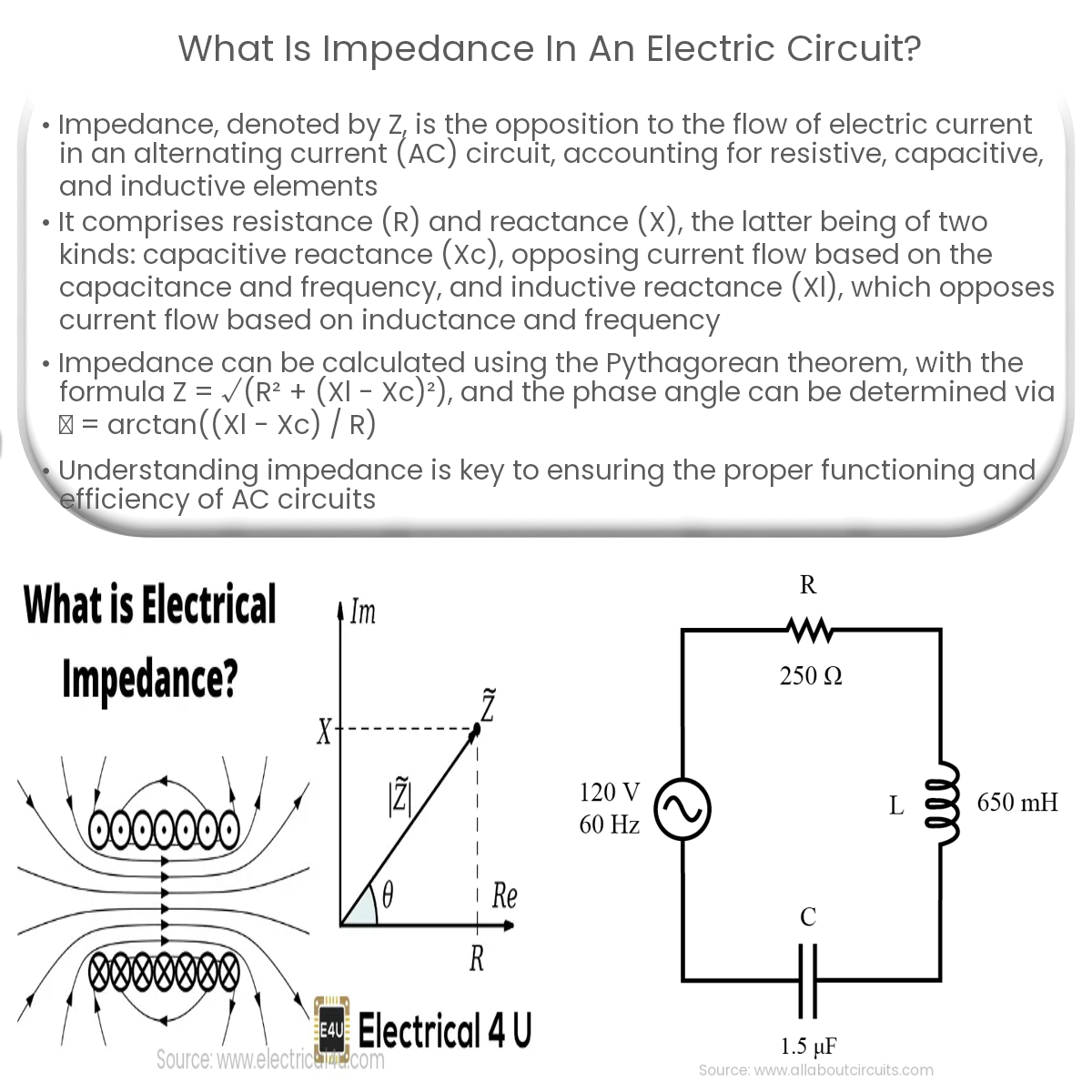Impedance is the opposition to the flow of alternating current in a circuit, taking into account resistance, capacitive reactance, and inductive reactance.
Impedance in an Electric Circuit
Impedance, represented by the symbol Z, is a measure of opposition to the flow of electric current in an alternating current (AC) circuit. It is a complex quantity, which means it has both a magnitude and a phase angle associated with it. Impedance plays a crucial role in analyzing and understanding AC circuits, as it accounts for resistive, capacitive, and inductive elements present in the circuit.
Components of Impedance
Impedance consists of two components: resistance (R) and reactance (X). Resistance is the opposition to the flow of direct current (DC) and is measured in ohms (Ω). Reactance is the opposition to the flow of alternating current, and it comes in two forms: capacitive reactance (XC) and inductive reactance (XL).
- Capacitive Reactance (XC): Caused by capacitors in the circuit, capacitive reactance opposes the flow of current in proportion to the frequency of the AC signal. It is inversely proportional to the capacitance and frequency of the signal and is measured in ohms (Ω).
- Inductive Reactance (XL): Caused by inductors in the circuit, inductive reactance opposes the flow of current in proportion to the frequency of the AC signal. It is directly proportional to the inductance and frequency of the signal and is also measured in ohms (Ω).
Calculating Impedance
Impedance can be calculated using the Pythagorean theorem, as it is a complex quantity. The formula for calculating impedance is:
Z = √(R² + (XL – XC)²)
The phase angle (θ) between the current and the voltage in the circuit can be calculated using the following formula:
θ = arctan((XL – XC) / R)
Impedance is critical when dealing with AC circuits, as it determines how the voltage and current are related. Understanding and calculating impedance helps in designing and analyzing electrical circuits, ensuring their proper functioning and efficiency.


